Dog Nose Dry- Possible Causes, Treatments, And Prevention!
Have you noticed your dog nose dry and worried? Most dog owners would say that a dog with a wet nose means it is healthy. Do many people also think that a dog is sick when his nose is dry but is this true?
Before we go into that issue, let’s first figure out why dogs have damp noses. The answer is straightforward: wet noses operate better. Dogs rely on their highly developed sense of smell to perceive their surroundings, and scent particles adhere to damp surfaces easier. A moist nose also cools your dog down on hot days, similar to how panting controls his body temperature.
The lining of your dog’s nose has mucus-producing glands that keep his nasal passage moist while also releasing a clear, watery fluid that helps him stay cool. Dogs also lick their noses frequently to keep them clean. All that sniffing can cause dirt and pollen to gather around your dog’s nostrils. Still, licking has two purposes: keeping your dog’s nose moist. It allows pups to interpret scent through taste, owing to a highly developed olfactory organ called the Jacobson’s organ.
So Why Is Your Dog’s Nose Dry?
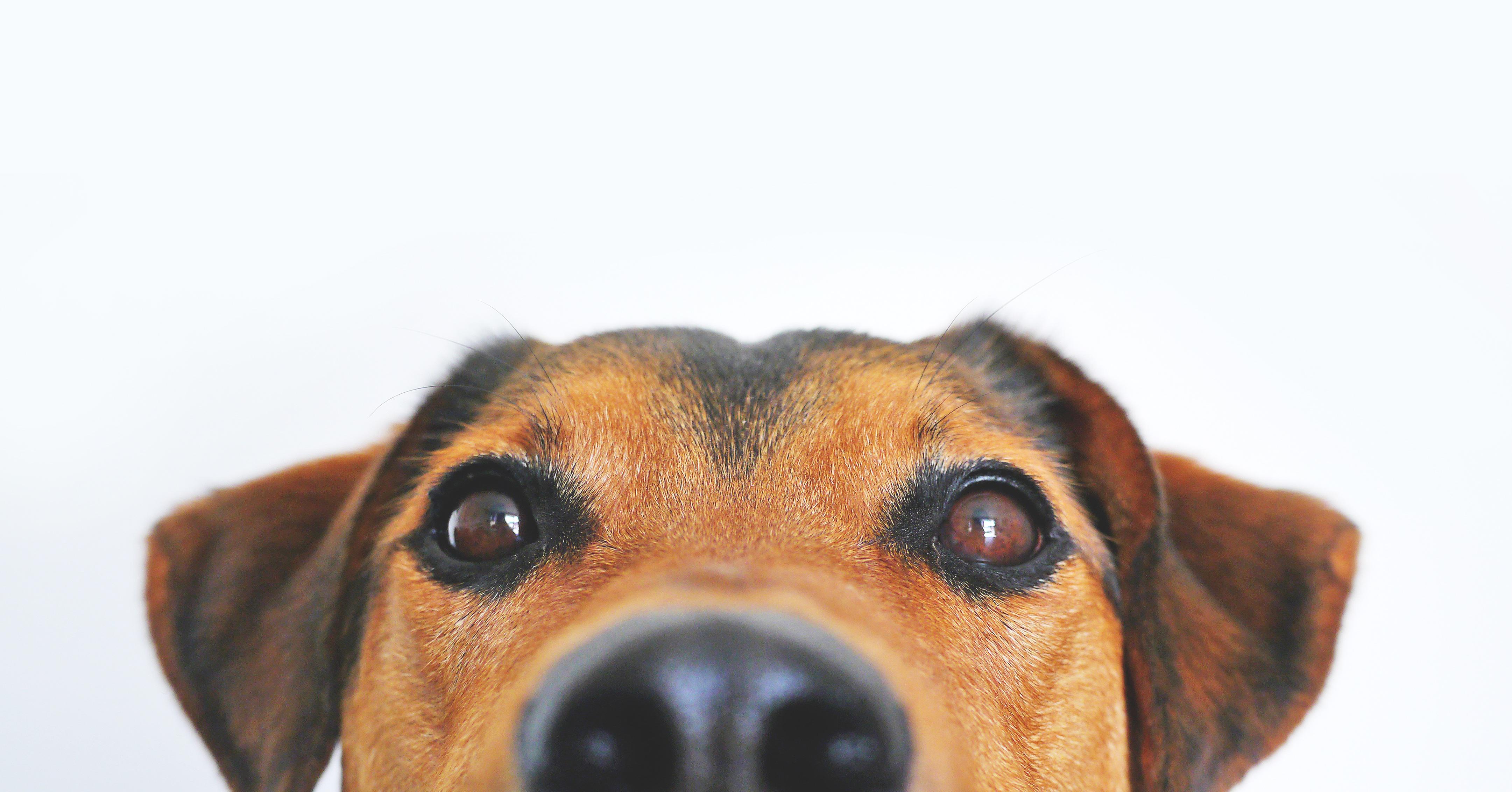
People often think that a dog with a dry nose is sick. The good news is that this is not true. When your dog’s nose is dry, it’s normal and nothing to worry about, so don’t worry about it.
The fact that your dog’s nose feels dry to the touch indicates less moisture than usual. When his nose is dry, it may also feel warmer than usual. This is an optical illusion caused by a lack of moisture (think about a heated swimming pool versus the air). Water at 85 degrees Fahrenheit feels cooler to the touch than air at 85 degrees Fahrenheit. When your dog’s nose is dry, you’re getting a sense of his average body temperature.
The only time you should worry about your dog’s dry nose is if he has other signs of illness or strange behavior, such as a change in the texture of his nose, cracks on his nose, lethargy, sores on different parts of his body, or other signs of disease.
Common Causes of Your Dog’s Dry Nose
Sleeping
When your dog sleeps, he does not lick his nose. This can lead to the nose surface drying off. It’s the same thing when you sleep with your mouth open.
Overactivity
Suppose your dog has been running vigorously or is excited about something. In that case, his nose may become dry due to not drinking, not licking, and drying from the breeze as he sprints around. Excessive activity can also produce mild dehydration, which can cause the nose to dry out.
Exposure to Elements
Sun and wind both dry out your dog’s nose, just as they can dry out our lips in the same situations. Extreme heat and cold can have the same effect, and sleeping near a heat vent in the winter can also dry out your dog’s nose. This is temporary, but continuous exposure to the sun, wind, or high temperatures can be harmful.
Age
Dry noses are more common in older dogs.
Brachycephalic Heritage
Brachycephalic breeds (and hybrids) like bulldogs and pugs may struggle to lick their noses normally. This can make the nose dry more frequently than in other dog breeds.
Diseases or conditions that can make a dog’s nose dry
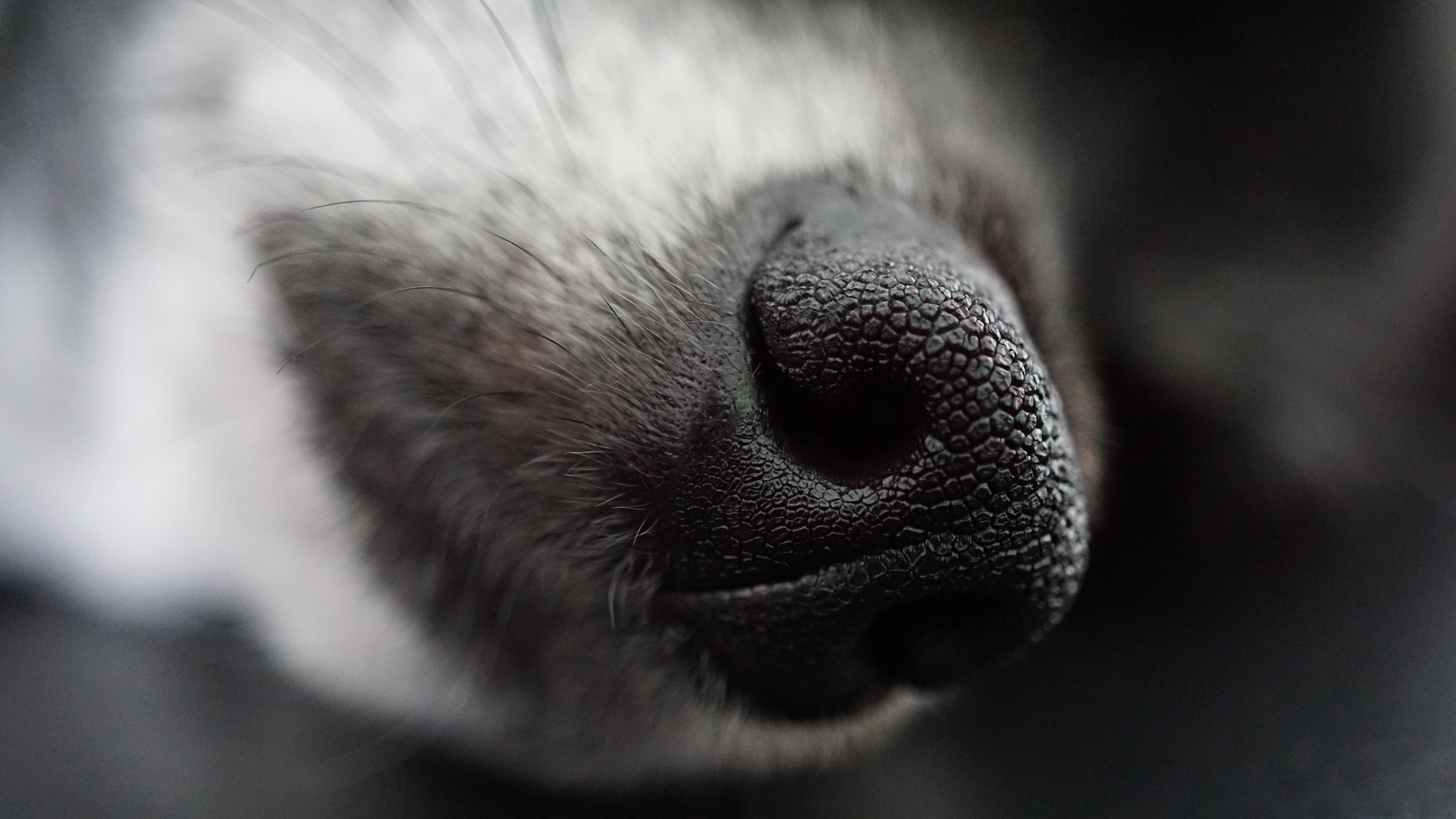
Even though your dog’s dry nose is probably normal, it could signify more severe health problems. Most of these issues can be identified by the presence of additional symptoms and the assistance of your veterinarian.
1. Dehydration
Dehydration occurs when your dog’s body does not have enough water. It can arise on its own or as a complication of another health problem. A dog suffering from mild dehydration may have less elastic skin than usual.
When you release a portion of your dog’s loose skin, it usually snaps quickly back into place. Dehydrated skin will return to its usual posture more slowly or, in difficult situations, will remain tented. Tacky gums, sunken eyes, and weakness are other indicators of severe dehydration.
2. Sunburn
Yes, the sun can burn your dog. Dogs with light fur are more at risk. When your dog gets a sunburn, the skin around his nose will turn red and peel.
3. Fever
A fever is an abnormally high body temperature in your dog (average dog temperature is 101-102.5 degrees Fahrenheit). Several different infections and illnesses can cause a fever. A feverish dog will be lazy and exhibit other symptoms of the disease.
4. Dry Eye or Blocked Tear Ducts
Tear ducts in your dog’s eyes drain excess tears into his nasal passages. Your dog’s nose will not receive moisture if his tear ducts are clogged or have keratoconjunctivitis sicca (KCS or dry eye). If your dog’s tear ducts are blocked, his eyes will be wet and drip down the side of his face. The dog may have thick discharge from his eyes and squint and wipe his eyes frequently if he has KCS.
5. Allergies
If your dog has allergies, It has sores on other parts of his body and may feel itchy. He may sneeze or have watery eyes less often.
6. Canine Distemper
It is a highly contagious and frequently lethal viral infection. The exact symptoms vary, but infected dogs become exceedingly ill. Canine distemper, thankfully, may be avoided by keeping your dog or puppy up to date on his distemper vaccinations.
7. Hereditary Nasal Parakeratosis
The nose gets crusty and breaks because of this genetic condition. Labrador retrievers are most likely to get it between 6 months and two years. The good news is that these dogs are otherwise healthy. A genetic test can test hereditary nasal parakeratosis, so responsible breeders can easily keep their puppies from getting it.
8. Idiopathic Nasodigital Hyperkeratosis
It is keratin overgrowth on the nose. It is more common in elderly dogs and brachycephalic breeds, but cocker spaniels may also be prone. The nose will appear rough and pointed in areas. Hyperkeratosis rarely causes other problems, but it can be uncomfortable. Affected dogs may also have keratin buildup on their paw pads. The reason is unknown.
9. Autoimmune Disorders
Dry noses can be caused by autoimmune illnesses such as discoid lupus erythematosus (DLE) and pemphigus. Sores around the nose and color
pigmentation are common in dogs with DLE. The nose itself often becomes completely smooth and loses its cobblestone aspect. The nose’s surface may also bleed. Lesions on the body of dogs with pemphigus are common.
10. Leishmaniasis
The parasite that causes this disease is usually spread by sandflies that bite. The skin type of leishmaniasis causes hyperkeratosis, an overgrowth of keratin, and thickening and hardening of the tissues. It also changes the color of the skin and makes the hair coat dry and brittle. Dogs usually get this form of disease that affects the organs, which causes them to feel tired, lose their appetite, vomit, have diarrhea, bleed from the nose, and be in pain.
Signs that your dog should go to the vet
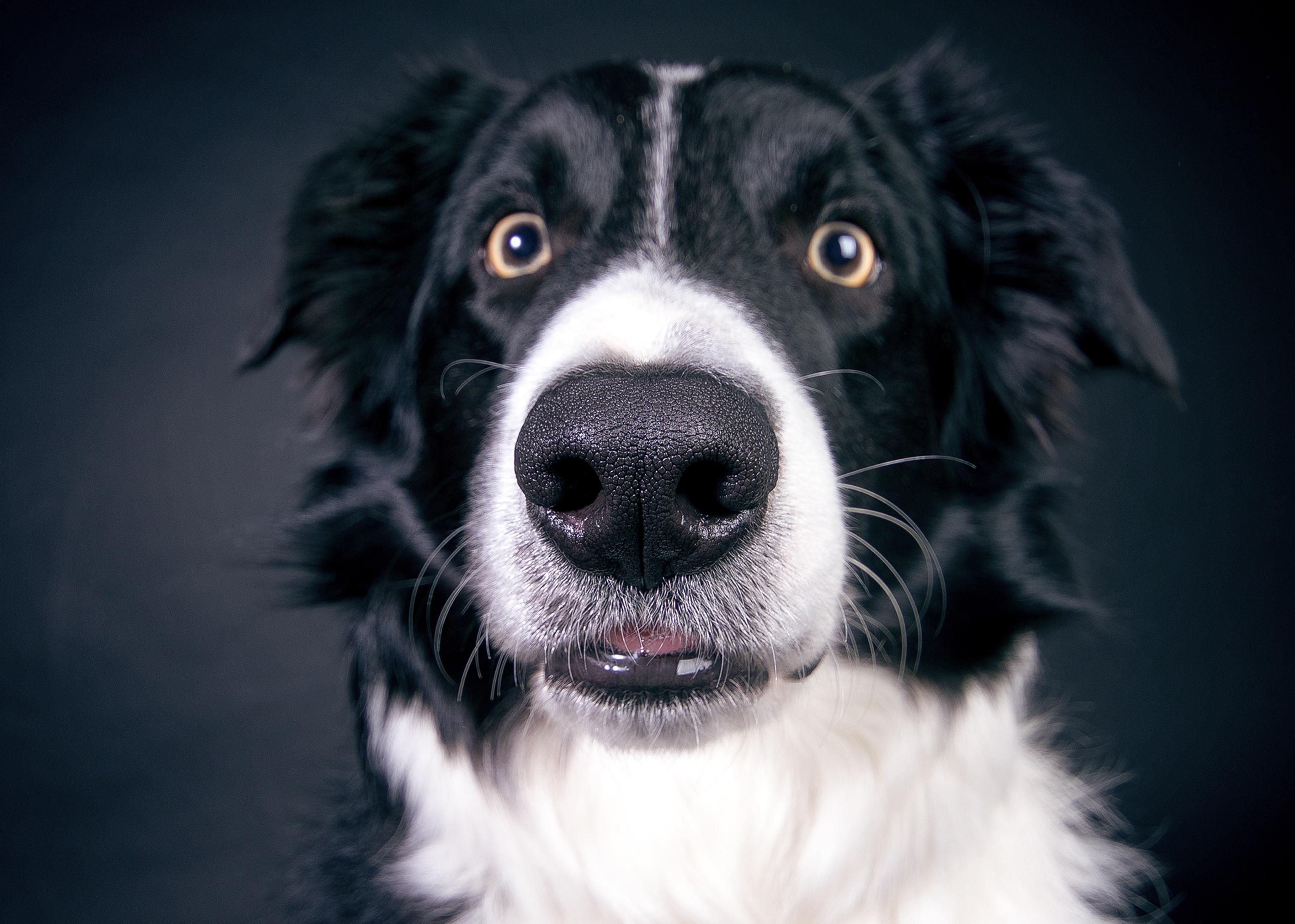
If something has changed with your four-legged pet, consult your veterinarian. Here are some warning indications that you should see a veterinarian:
- Sunken eyes or severe dehydration
- Nose crusting, bleeding or peeling in your dog.
- Excessive nasal discharge
- Sneezing excessively or reverse sneezing
- A color change on your dog’s nose is unusual for them (i.e., not the normal seasonal variation in nose color seen in a few dog breeds.)
- The nose’s normal “cobblestone” look has been lost.
- Dogs with dry noses on one side
Treatment and Prevention of Dry Nose in Dogs
When your dog’s nose becomes dry, it usually resolves independently. If it becomes chronic, you can do a few things to keep his nose moist and healthy.
- Make sure he has daily access to clean, fresh water to stay hydrated.
- To protect light-colored canines from sunburn, apply a dog-safe sunscreen to their nose and muzzle.
- To add extra hydration, apply a dog-safe nasal balm to his nose. These items can be obtained from your vet, pet stores, or online sites.
Your veterinarian can cut the extra keratin in dogs with idiopathic nasal hyperkeratosis. If your dog’s nose has fissures and cracks, they may also prescribe a steroid or antibiotic treatment to help them heal. Soaking the nose with a warm, damp towel and applying petroleum jelly will keep the nose soft.
Suppose your dog shows symptoms other than a dry nose. In that case, he should get consulted with a veterinarian as soon as possible. The underlying condition will determine the treatment.
Dog Nose Dry? Final words:
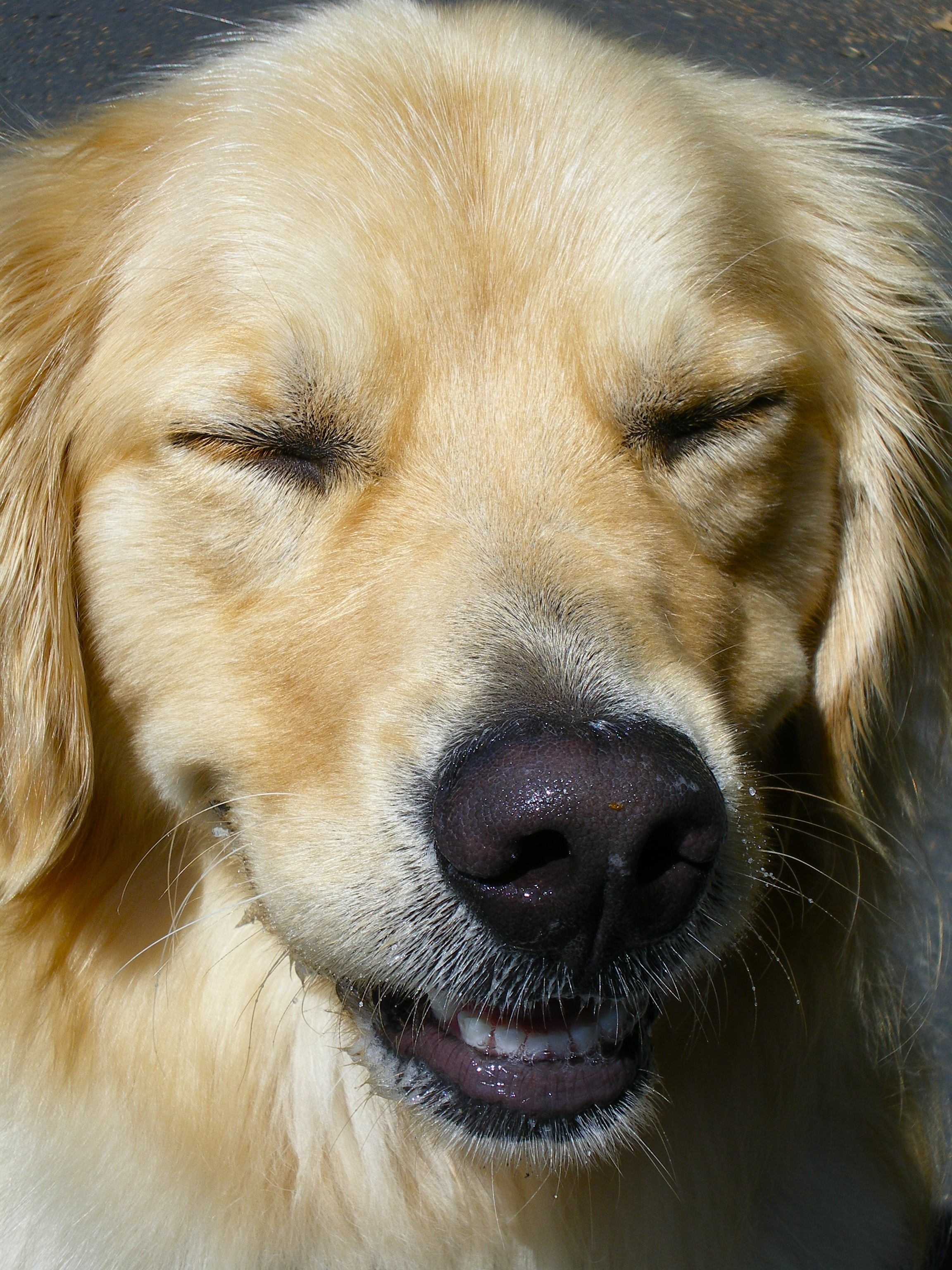
The next time you wonder why your dog’s nose is dry, think about the reasons we talked about. Was your dog sleeping or hot? Is it dry in your home? Or are you noticing other worrying signs, like a nose that is cracking, bleeding, or hurting? Is your dog acting normally, or are they showing other possible signs of illness? These questions will help you decide if you should call your vet or give your dog some water, wait a while, and see what happens.
When you’re not sure, though, it’s always best to talk to your vet. The good news is that your dog’s dry nose usually doesn’t cause any problems. Some health problems like autoimmune disorders and excessive thirst must be treated.
The nose of a dog gives it a fantastic ability to smell. With the help of your veterinarian, you can keep your dog’s nose looking good and working well for many years to come.
FAQs
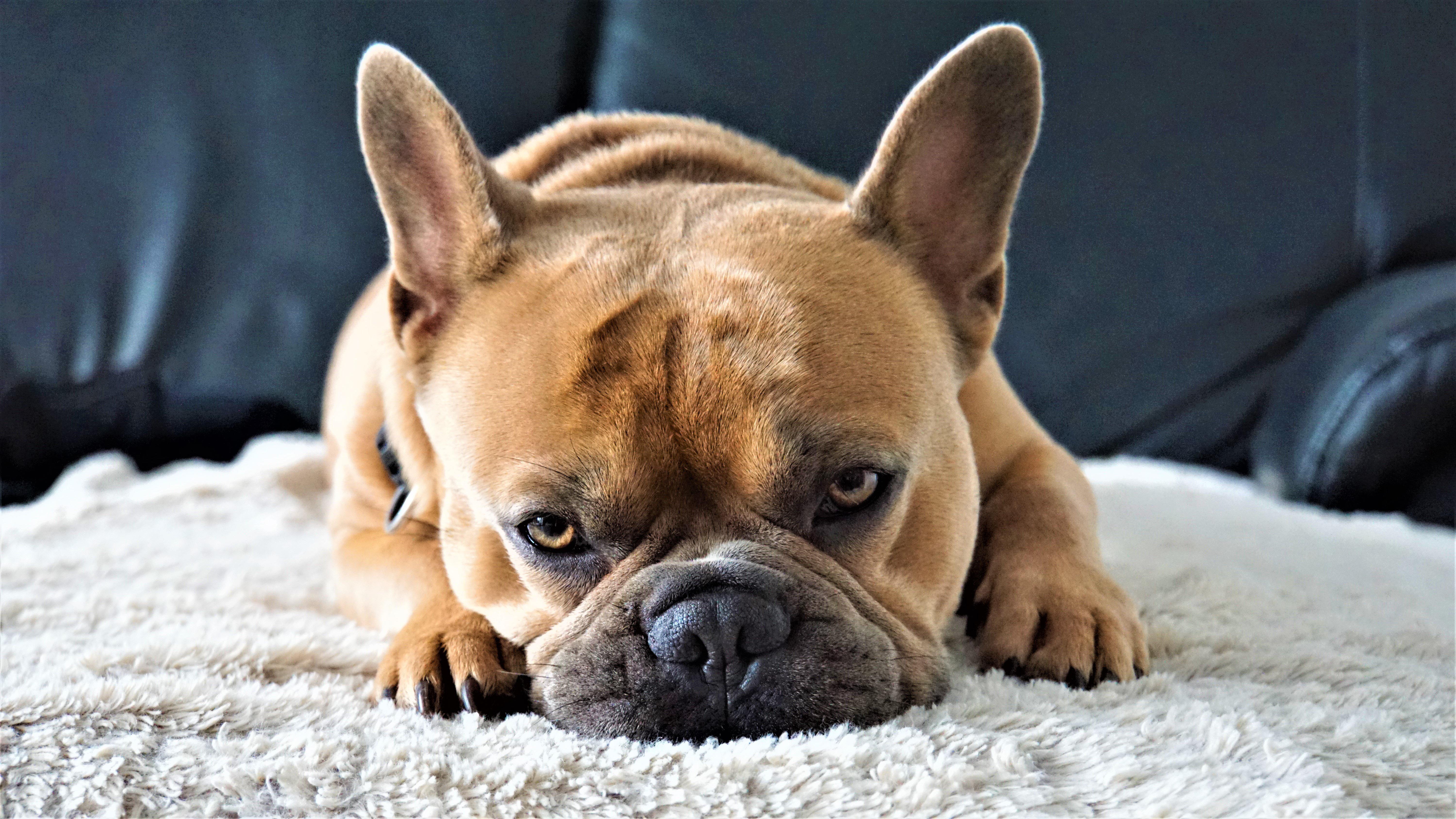
1. What can I give my dog to relieve a dry nose?
You can Help Soothe & Heal Your Dog’s Dry Nose by giving them the following things.
Shea Butter, Cocoa Seed Butter, Coconut Oil, Olive Oil, Castor oil, and Almond oil.
2. Should a dog’s nose be moist or dry?
A wet nose is common, but a dry nose is not always uncommon. Many people believe that a healthy dog has a cold, moist nose while a sick dog has a warm, dry nose. That is not always the case. The temperature and moistness of a nose are not reliable general health indicators.
3. Is it okay if my dog’s nose is dry?
A healthy dog’s nose should be cold and moist most of the time. It shouldn’t drip too much, and your dog’s nose shouldn’t have any discharge. The nose of your dog should also feel cool when you touch it. If you can feel that your dog’s nose is warm, it could have a fever or an infection.
4. Can I put Neosporin on my dog’s nose?
The simple answer is no. It would help if you didn’t put Neosporin anywhere your dog can easily reach with its tongue since it’s not safe to eat. Small amounts of Neosporin are not dangerous, but the main worry is that it could hurt healthy gut bacteria.
“A second possible cause of GI upset would be the lubricant base,” which could also cause vomiting or diarrhea. So stick with a balm made for dogs and save the Neosporin for your cuts.
5. Can Vaseline heal my dog’s nose?
Vaseline is another treatment for chapped skin that only humans should use. We should never use it on our pets, maybe even ourselves. Petroleum jelly is a manufactured product that can clog pores and worsen skin problems. It also won’t do much to moisturize a nose that is already dry. Also, a dog can get lipoid pneumonia from too much petroleum jelly, which can happen if it is put on a nose that is always dry.
6. Is it safe to use baby oil on my dog?
It is safe to use baby oil on fur, but you should only use a small amount. Because it usually has chemicals and scents that can’t be digested, you should keep it away from the mouth and other places where the dog likes to lick. Always talk to your vet ahead of time about home remedies.
7. Does coconut oil help dogs with dry noses?
Coconut oil can be helpful for dogs just as much as it is for people. Organic coconut oil can help your dog’s dry nose, skin, and hair feel better. The biggest problem with putting coconut oil on your dog’s nose is that it makes a mess. Balms are preferred because they get absorbed quickly and don’t melt too much.

